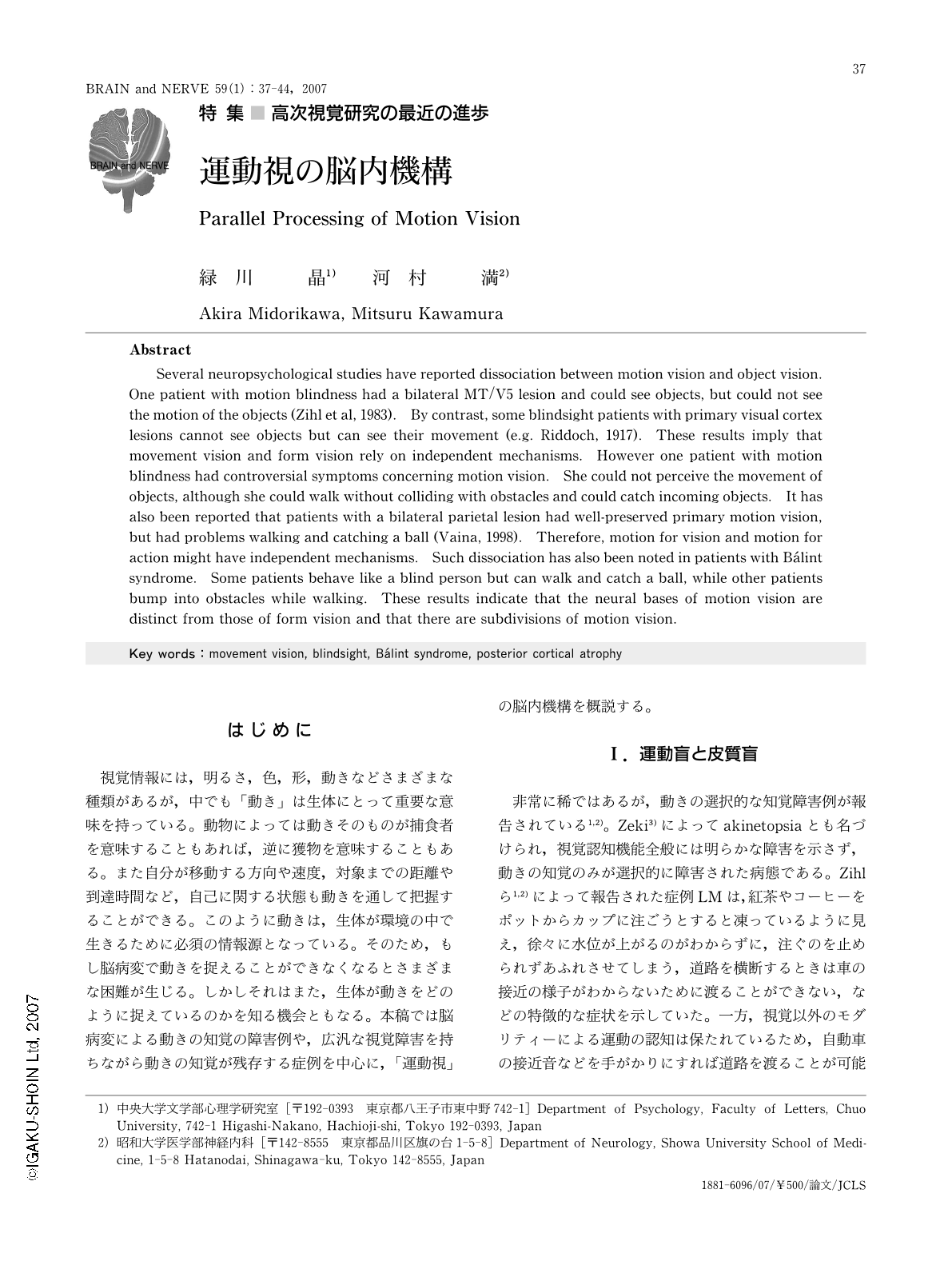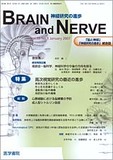Japanese
English
- 有料閲覧
- Abstract 文献概要
- 1ページ目 Look Inside
- 参考文献 Reference
はじめに
視覚情報には,明るさ,色,形,動きなどさまざまな種類があるが,中でも「動き」は生体にとって重要な意味を持っている。動物によっては動きそのものが捕食者を意味することもあれば,逆に獲物を意味することもある。また自分が移動する方向や速度,対象までの距離や到達時間など,自己に関する状態も動きを通して把握することができる。このように動きは,生体が環境の中で生きるために必須の情報源となっている。そのため,もし脳病変で動きを捉えることができなくなるとさまざまな困難が生じる。しかしそれはまた,生体が動きをどのように捉えているのかを知る機会ともなる。本稿では脳病変による動きの知覚の障害例や,広汎な視覚障害を持ちながら動きの知覚が残存する症例を中心に,「運動視」の脳内機構を概説する。
Abstract
Several neuropsychological studies have reported dissociation between motion vision and object vision. One patient with motion blindness had a bilateral MT/V5 lesion and could see objects, but could not see the motion of the objects (Zihl et al,1983). By contrast, some blindsight patients with primary visual cortex lesions cannot see objects but can see their movement (e.g. Riddoch, 1917). These results imply that movement vision and form vision rely on independent mechanisms. However one patient with motion blindness had controversial symptoms concerning motion vision. She could not perceive the movement of objects, although she could walk without colliding with obstacles and could catch incoming objects. It has also been reported that patients with a bilateral parietal lesion had well-preserved primary motion vision, but had problems walking and catching a ball (Vaina, 1998). Therefore, motion for vision and motion for action might have independent mechanisms. Such dissociation has also been noted in patients with Bálint syndrome. Some patients behave like a blind person but can walk and catch a ball, while other patients bump into obstacles while walking. These results indicate that the neural bases of motion vision are distinct from those of form vision and that there are subdivisions of motion vision.

Copyright © 2007, Igaku-Shoin Ltd. All rights reserved.


